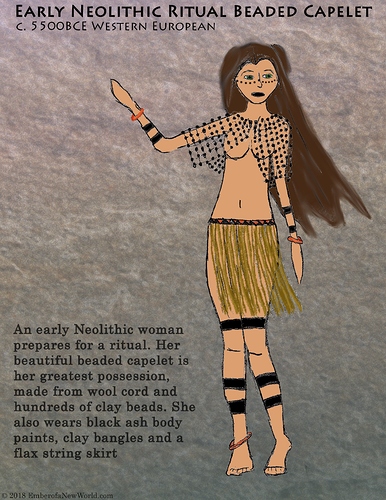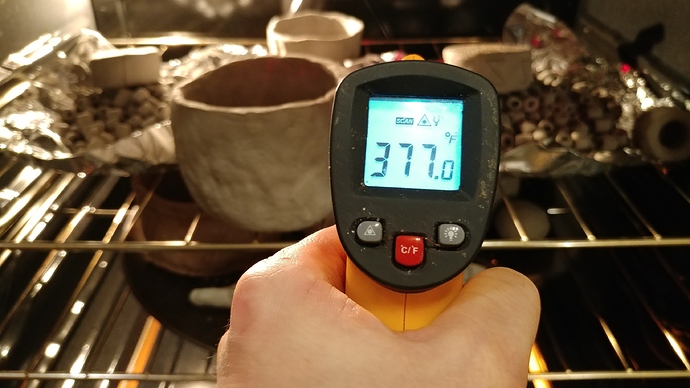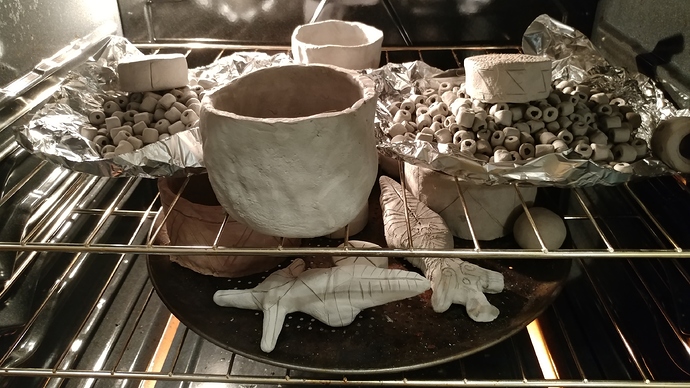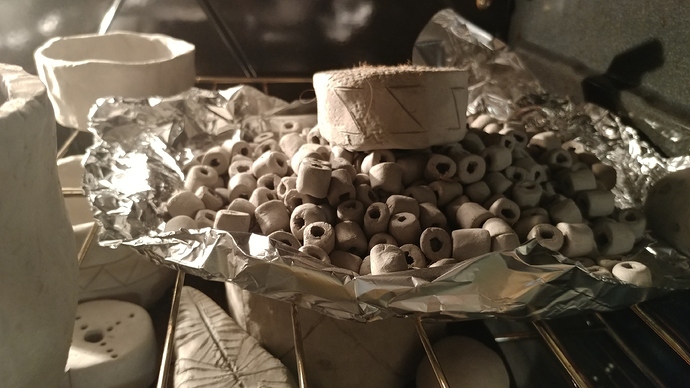Let’s talk about the weight of 500 clay beads, which, as you correctly mention, only provide insufficient protection.
Why should I consider such a thing? I love speculation, but in the end you have to judge it practically, right? Think, there is the edge of the plate a bit high, rather a clay vase …
Ok. First when we look at possibilities of use of an item we have to look at the people who had it and what it could be used for. The first trap assumption for beads is to assume point blank that beads = decoration. We dont know that. Logically however you get that with smaller number of beads in a single find, a dozen is decoration, but several hundred large beads, and the ones lotus253 are making are large is a lot, where ten will cover the width of the neck of a mannequin. This must weigh quite a bit. It could be purely decorative, but with this much effort there might be more going on.
Now the second mental trap other than preconceptions of use of beads as decoration is the preconceptions of use of armour. Neolithic tribes were unlikely to wage war with any frequency. Humans are by far the most dangerous prey, they would require ambush attacks and skirmishing at most., skills based on hunting.
Carniverous prey animals/ random encounters will likely be the single largest combat related hazard.
Now something like a lion has very specific attack patterns it uses againt a human, this is VERY well documented by the Roman bestiarii and the information is directly transferable. Armour of nearly any kind is hopeless against large herbiverous megafauna due to impact trauma that they largely rely on. However carniverous megafauna like lions, leopards and such would be a major threat to hunters, and are not something one can negotiate with, they can outrun humans and cant necessarily be avoided. This is doubly so if the hunter is bringing home a kill of his own and a big cat smells the carcass. I summise that predatory cats possibly bears and canids will be a problem.
Heavy furs are commonly used as deference against animal attack, with particular attention to a heavy collar and cumberband, this might not be practical in warm climate so other things may be needed. Now we know as flat fact that large cats tend to either attack the neck or rake the stomach to disembowel. A necklace of heavy beads will very likely get in the way of a bite, and a pectoral with beads will likely interfere with claws.
Beads have long been associated with protection across several cultures. Why is this? Is it a throwback to an earlier defensive effect. A long string of beads wrapped around the neck several times doesnt look like armour, but could well save a hunters life, a hunter may well want a daughter to wear.
Ancient peoples didnt weigh themselves down with junk, decoration happened but it had to be at least semi functional. How a ritual costume can be cumbersome and hat can account for heavy beads, but it doesnt necessarily explain why they made beads to begin with.
We see ancient jewellery and it tended to be finely decorative. Against decorative jewellery tended to be fine, if one was to make large clay beads one would want to cover them with markings and not leave them as plain and round.
If the images that lotus253 are based on recovered artifacts then plain undecorated beads then I suspect they had a practical purpose. Humans don’t make stuff like that for decoration without decorating them. Paint possibly, but for clay the first option is to cover them with patterns.
Chain mail - unfortunately we are still in the Neolithic. Hope too, that we still get there …
What is silk used for? If your mind goes to stocking and nice dresses then might be interested to know that it was prior to this used as fine ropes and armour. Asiatic peoples wore silk shirts because bowfire would enter the wound without penetrating the silk driving the silk into the wound, this meant an arrow would not penetrate far and could be easily withdrawn for a clean wound.
Now to look at a silk shirt the fact that is very good armour is possibly the last thing on your mind. We would not know this was true had not history told us.
I look at a very large quantity of large beads and see options.
Probably one of the biggest problems is that the clay is typically around. A projectile, such as an arrow, will not ricochet off of the armor… Instead, the round beads will help Force the arrow into the victim at a better orthogonal angle. In effect, bead armor will make it easier to hit you.
Actually the roundness has the opposite effect. Decorative clay beads are often tubular or lighter as you can get more coverage for less material, yours are exclusively rounded thick and heavy, this makes them very sturdy the right sort of thing you want in the way when a lion is trying to get its jaws around your neck.
No protection from arrows though, but then I was at pains to clarify from the beginning, on several posts on the subject that I propose it to most likely be effective against animal attack injuries not battlefield injuries
Now if the beads were constructed more like rings, sort of like a ring mail, that might work.
This is an extrapolation, and is why I asked about the numbers of beads being found in sites. If beads were found a dozen at a time, necklace or bracelet. Moving on. But hundreds? That is either a costly weighty decoration that you don’t want wearing most of the time or something with a second undisclosed function. We have surviving beads but not surviving connecting cord. A mail shirt of large beads is possible, protective gorget, pectoral or cumberband more likely.
However I would need more evidence before I advanced that as an option. Body armour need not be effective against all weapons, but a web of large beads might have effect against slashing damage and thus would have value worn or woven into furs which are weak with regards to that particular defence.
Take these chappies:
Napoleonic era French Hussar and Cuirassier. The Cuirassier is clearly armoured, he has a breastplate and backplate to his cuirass and a metal helmet. This made him expensive to equip. Austrian cuirassiers only had a breastplate and helmet, and were vulnerable to a backhanded passing attack from the sabre of a better armed French cuirassier. For armoured horsemen of the time this was as good as it got, the cheek strap was also armoured and the fabric was heavy but all the cost went into protecting the head neck and body from both sides with steel. One could of course have better armour than that, such as knightly armour, but on a cost to effect basis you have enough with what you had. Cuirassiers qualified as heavy cavalry and had clear advantage on the battlefield in melee.
Now observe the Hussar next to him and his traditional look of the jacket half off the shoulder. This is in fact armour. The Hussar is also effectively armoured, the half off jacket is in fact a heavy cloth leather and padding protection to cover the left shoulder . The Cuirassier had metal to protect there as part of his overall ‘defensive package’ the Hussar only had his decorative suave overhang. But when facing a sabre armed horseman the diagonal downward swipe to the shoulder is the single easiest, fastest and most deadly attack, and the Hussar was singly protected to defend against it if nothing else.
Now to a modern eye the actuality of the Hussars defence is very easily overlooked, it appears to be purely decorative, a feature of light cavalry, but it was an effective armour defence against other light sword cavalry.
The point being, we don’t easily see what we are looking at if we overlook the possibilities. I suggest that reconstructive history needs to think outside the box. Something seemingly decorative might have protective qualities, just like the Hussar’s shoulder garb.


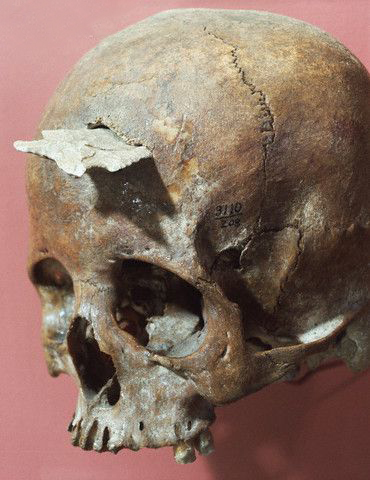
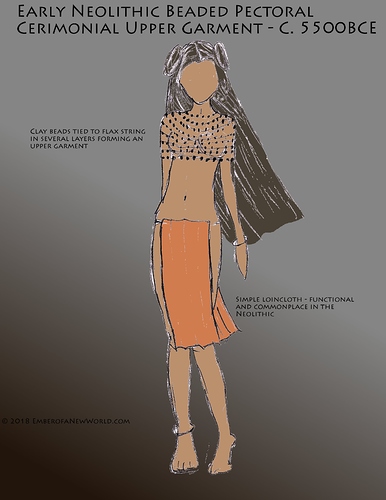
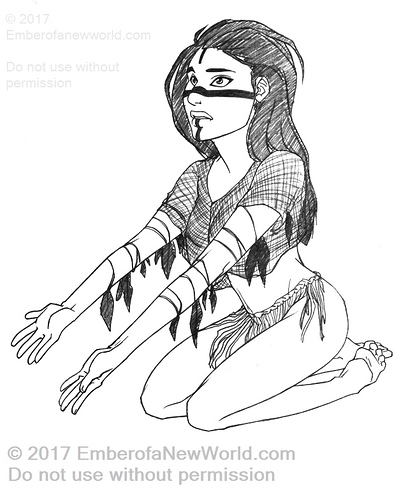

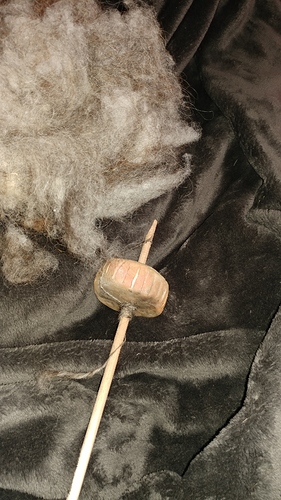
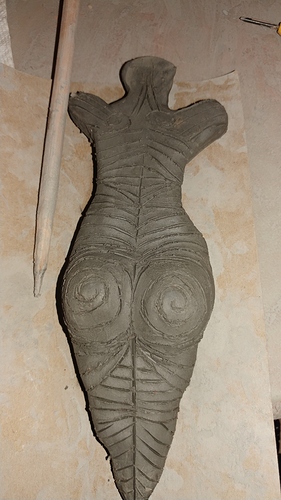
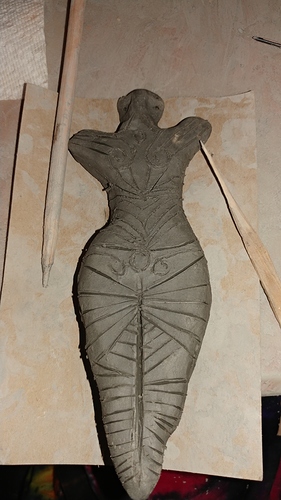




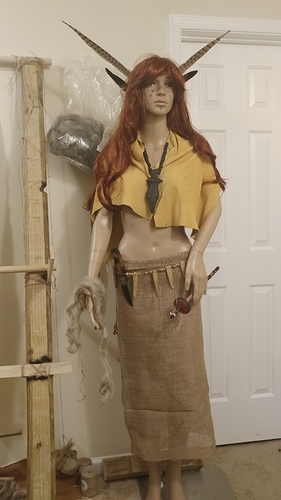
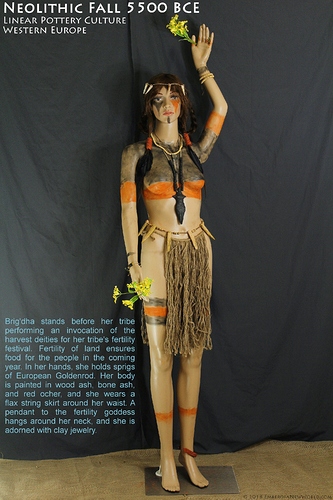

 )
)